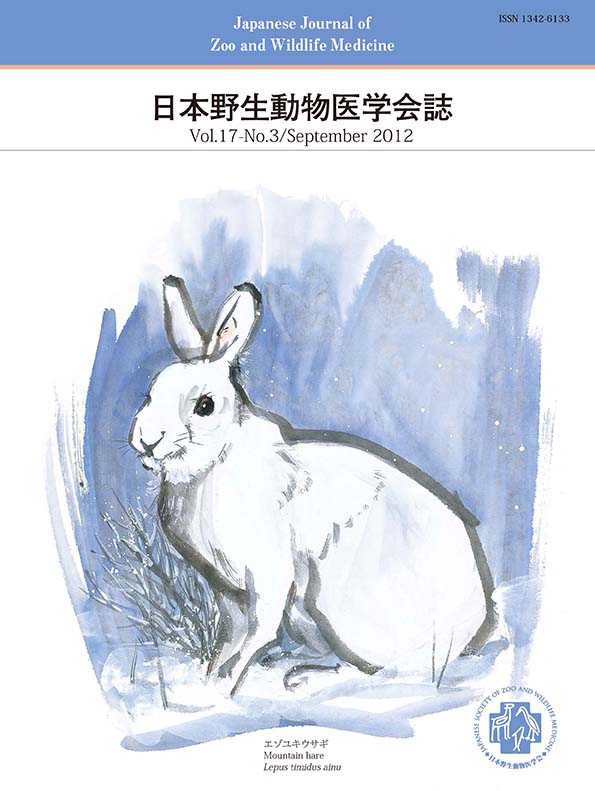Volume 17, Issue 3
Displaying 1-7 of 7 articles from this issue
- |<
- <
- 1
- >
- >|
Special articles
-
2012 Volume 17 Issue 3 Pages 91-96
Published: September 28, 2012
Released on J-STAGE: July 26, 2018
Download PDF (116K) -
2012 Volume 17 Issue 3 Pages 97-109
Published: September 28, 2012
Released on J-STAGE: July 26, 2018
Download PDF (329K) -
2012 Volume 17 Issue 3 Pages 111-112
Published: September 28, 2012
Released on J-STAGE: July 26, 2018
Download PDF (457K) -
2012 Volume 17 Issue 3 Pages 113-118
Published: September 28, 2012
Released on J-STAGE: July 26, 2018
Download PDF (1497K)
Full paper
-
Article type: Full paper(Japanese)
Subject area: parasitology
2012 Volume 17 Issue 3 Pages 119-126
Published: 2012
Released on J-STAGE: November 30, 2012
Download PDF (762K) -
Article type: Full paper(English)
Subject area: Anatomy
2012 Volume 17 Issue 3 Pages 131-138
Published: 2012
Released on J-STAGE: November 30, 2012
Download PDF (826K)
Case report
-
Article type: Case report(Japanese)
Subject area: pathology
2012 Volume 17 Issue 3 Pages 127-130
Published: 2012
Released on J-STAGE: November 30, 2012
Download PDF (719K)
- |<
- <
- 1
- >
- >|
